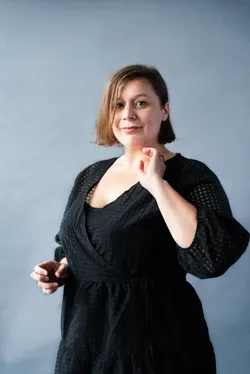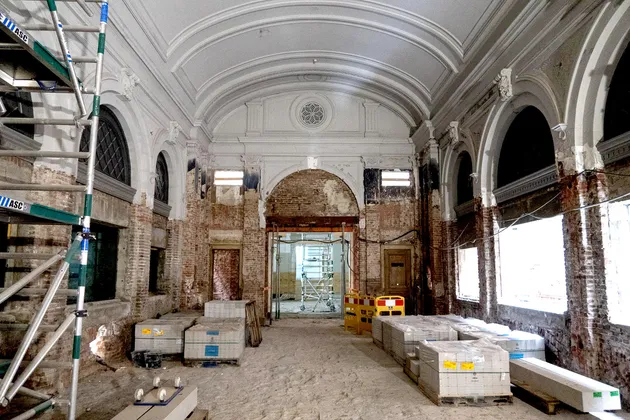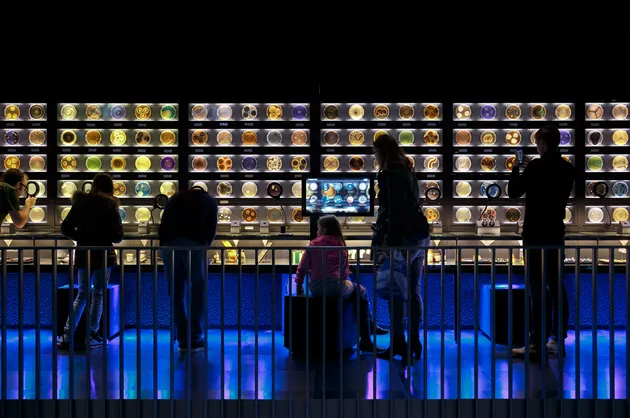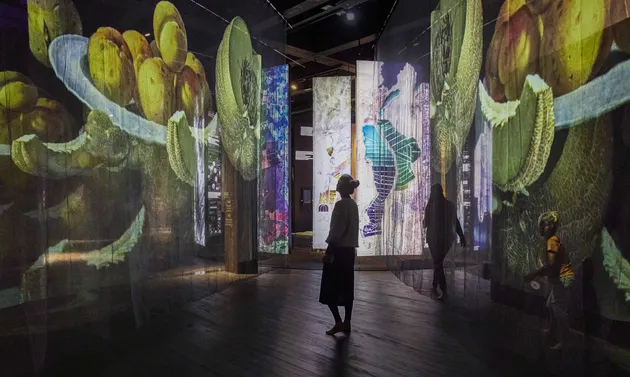DESIGNING AN INTERCONNECTED WORLD
Groote Museum
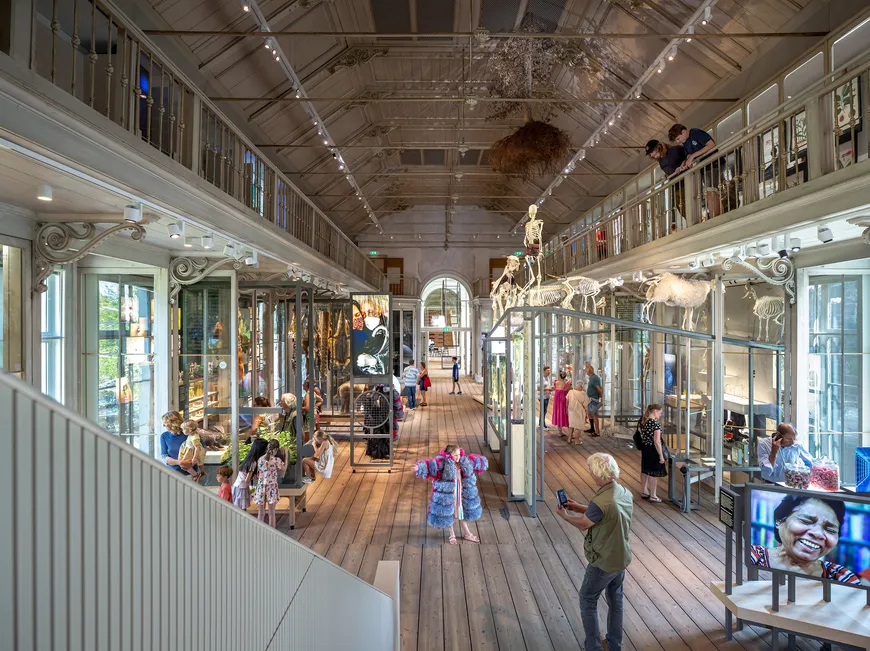
In Western cultures, people tend to see themselves as separate from nature—but is that really true? Developed in close collaboration with ARTIS, this exhibition explores humanity’s place in the world through multiple perspectives. Visitors are invited to reflect on their relationship with plants, animals, and microbes. How are you different from a salamander? Do your shoes reveal how connected you are to the earth? At the Groote Museum you will experience how everything, including yourself, is connected.
- Location
- Amsterdam (NL)
- Client
- ARTIS
- Year
- 2022
- Service
- Concept, content development, spatial design
Old building, new story
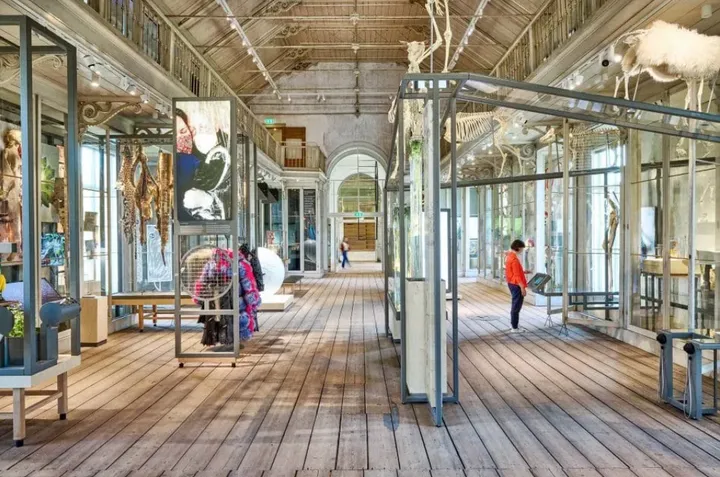
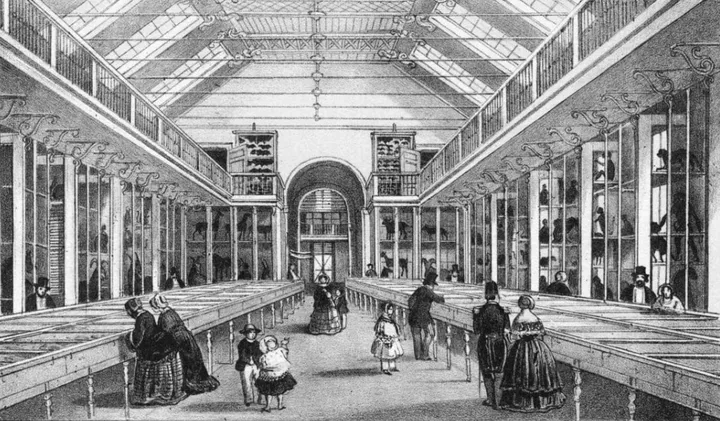
The Groote Museum was once one of the first natural history museums of its kind. But during the Second World War, much of its collection was lost. After the war, the museum closed its doors and remained untouched for decades—gathering dust like a forgotten time capsule.
When renovations began in 2016, the building revealed itself as a monument to an old way of seeing nature: meticulously categorized and labeled behind 170 meters of glass showcases. Designing a new exhibition here required a sensitive approach—modern and dynamic, yet deeply respectful of the building’s original character and expressive power.
Three-part collage
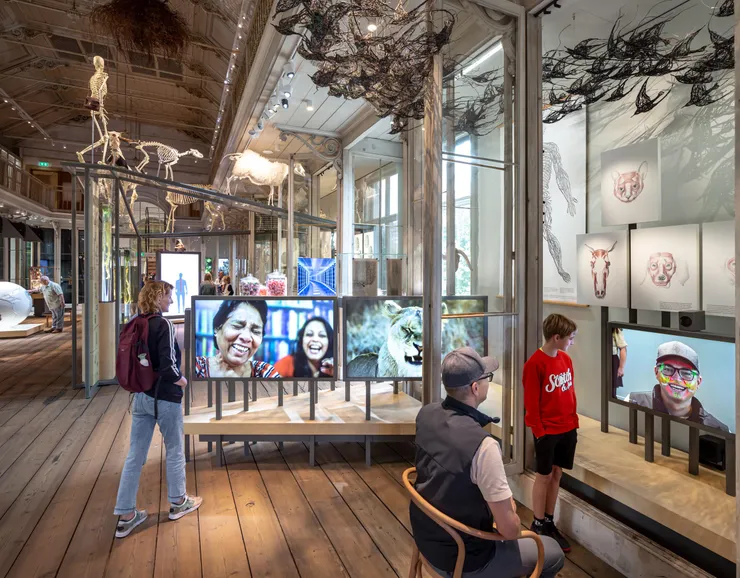
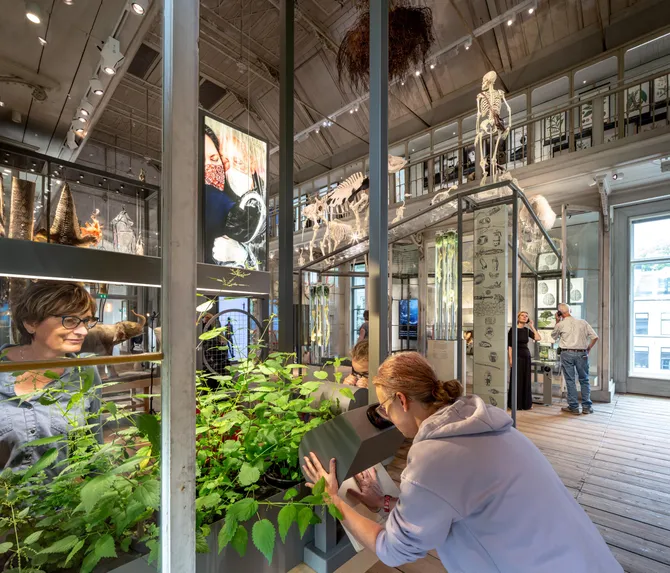
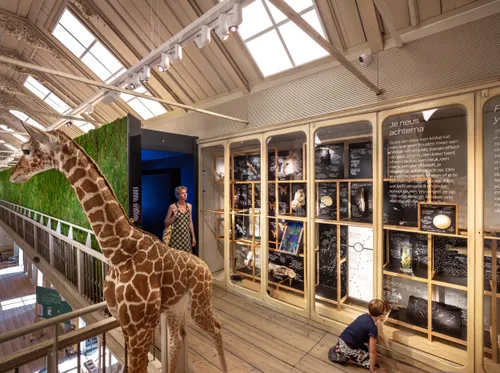
Opening doors
Rather than fight its monumental presence, we entered into dialogue with it. We treated the building itself as the museum’s most important object. After all, it’s the only remaining original piece of the collection. But instead of locking up natural collection behind the glass, the doors are left open and collection literary walks out. A scenographic metaphor for today’s understanding of our interconnected lives.
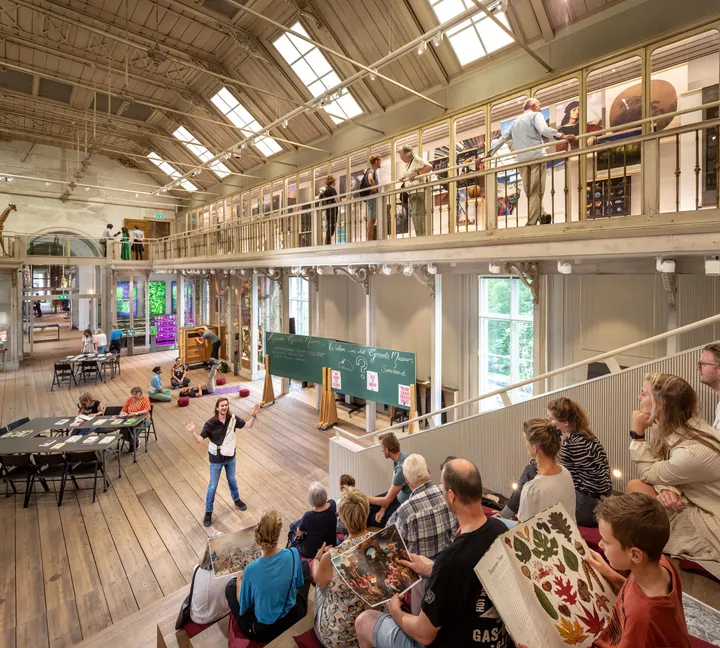
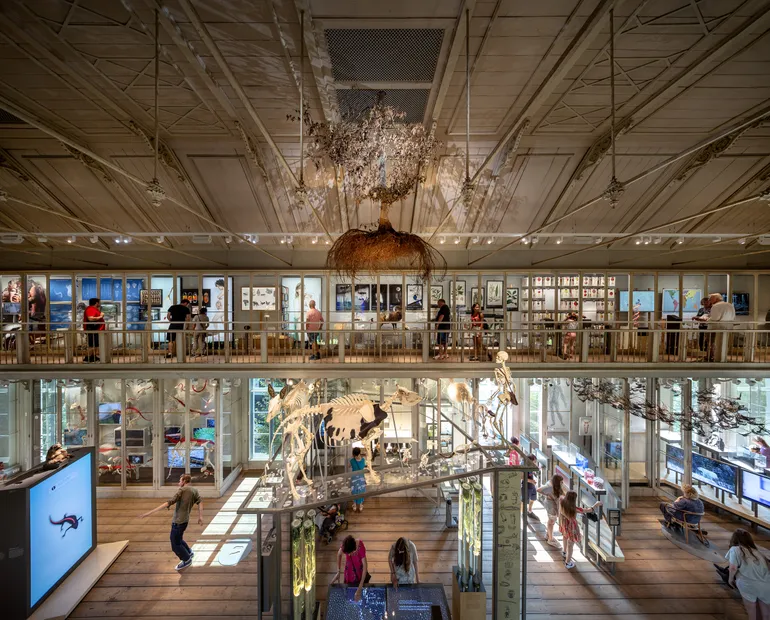
The most dangerous worldviews are the worldviews of those who have never viewed the world.
Alexander von Humboldt is an important source of inspiration for the Groote Museum. Von Humboldt was one of the last generalists, studying biology, geology, philosophy and science as a whole. Observing and freely associating were essential to his practice, as was describing his findings in a poetic way. This inspired us to mix stories and make unusual associations, offering a new way to experience nature, not as something separate, but as something we are undeniably part of.
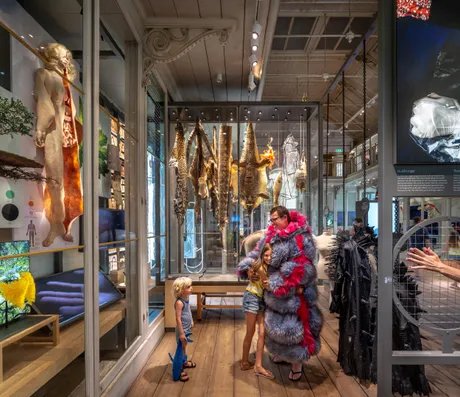
Observing and freely associating
We organised the exhibition into twelve themes, each based on a specific body part. Each theme has a collection that acts a starting point for associative themes that all say something about you and the world around you.
Middle-aged and serious I entered the building, only to transform into an 8-year old child inside.
Awards
Dezeen Awards 2022
- Shortlist Exhibition Design
IDA Design Awards 2022
- Honorable Mention
